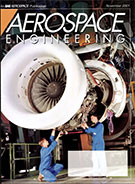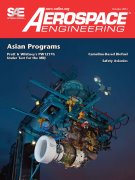Magazine

Autonomous Vehicle Engineering: January 2019
2019-01-08
Editorial Trust, testing and transition SAE Standards News SAE updates J3016 automated-driving graphic View from a Visionary Chris Urmson helped give birth to vehicle autonomy. His company, Aurora, is leading the technology to maturity and widespread adoption. Extending EV Range Using AV Programming Intelligent programming of autonomous electric vehicles offers potentially big energy savings, according to a study by IAV. Intel Study: Autonomous Vehicles Expected to be Common-in 50 Years New U.S. consumer survey sees most Americans "expect" AVs, though many currently fear the technology. Europe's Latest AV Testing Facilities Key for Swift Autonomous Adoption The need for data sharing and commonality in burgeoning AV technologies is bringing new meaning to the words 'proving grounds.' End Public 'Shadow' Driving! The best way to test and train AI for autonomous vehicles is through proper simulation, systems engineering, and an end-state scenario matrix.



















